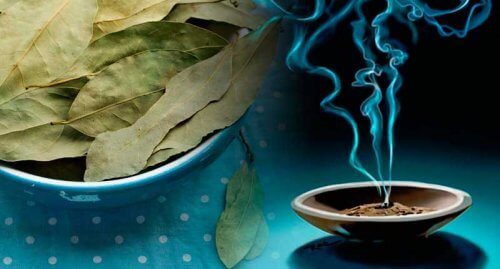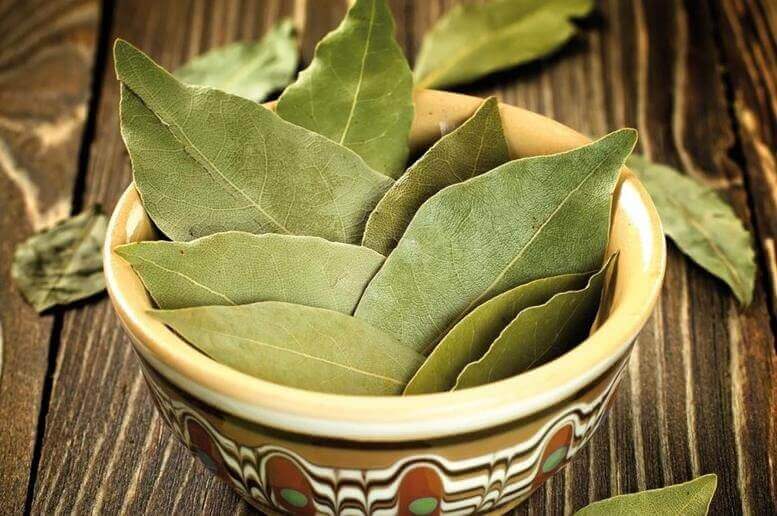Fight Anxiety with This Age-Old Remedy with Bay Leaves


Written and verified by psychologist Valeria Sabater
Bay leaves lend their flavor to our favorites dishes, calm the mind and improve the health of our body.
This shrub has been used since antiquity by the cultures of the Mediterranean who still use it for the same purposes to this day.
Beyond its well-known expectorant properties, the strong-smelling leaves of the laurel bush offer a whole host of benefits for the mind and body.
It’s an essential spice in the kitchen that symbolizes triumph in many cultures.
The classic laurel wreath is another way this plant has been commonly used.
Keep in mind, however, that you should never eat the leaves. Use them to make teas and aerosol sprays or to flavor rice, but remember to remove the leaves before serving.
Here’s one of its best-known applications: to fight anxiety.
How bay leaves fight anxiety
The laurel bush is a medicinal plant. Bay leaves have long been used as a stomach tonic.
It’s a good digestive and helps fight all types of inflammation. It helps the body absorb nutrients better and its fragrance stimulates the appetite.
As we mentioned above, you should never chew or swallow this plant.
It’s only toxic when you eat in large quantities, but as with all medicinal plants, the key to its benefits is using the right doses in moderation.
Let’s take a look at some of the properties that characterize this noble plant from the Mediterranean.
Purify your body and regulate your breathing
Laurel is a balancing and relaxing plant. These almost spiritual characteristics are what help improve circulation, digestion and even liver function. Bay leaves promote inner balance and have a relaxing effect on the mind.
Bay leaves are used in aromatherapy to treat phlegm and mucus, as well as killing bacteria in the airways.
Care for your heart—bay leaves are naturally relaxing

When we’re suffering from anxiety, the brain activates the fight-or-flight response. This alert system has an immense impact on the heart: it accelerates heart rate and can even tense the muscles, causing strain.
- Feeling pressure in the chest is a really common symptom associated with anxiety. A way to combat these effects is by using bay leaves (either as a tea or in aromatherapy).
- Cafeic acid is an organic compound found in the plant and it noticeably improves cardiac health. Furthermore, it’s an amazing antioxidant that fights inflammation. Lemons and green tea also contain this substance.
Reduce stress and anxiety
Bay leaves have a calming effect. Linalool, an essential oil found in the plant, is really useful for calming your mind and reducing cortisol levels in your blood.
Also read:
The stress hormone often reacts really well to natural therapies like phytotherapy and aromatherapy.
However, if your anxiety levels persist or last longer than a month, consult a healthcare professional.
These types of approaches are complementary. They should never take the place of proper medical treatment.
How to use bay leaves to fight anxiety

Treatment 1: bay leaf and cinnamon tea
Ingredients
- 1 liter of water
- 2 cinnamon sticks
- 5 bay leaves
Directions
- It’s really easy. All you have to do is heat the water on the stove. Once boiling, add the cinnamon and bay leaves.
- Strain and store in a glass container.
- Enjoy it just before a meal.
Also discover:
Treatment 2: burning bay leaves
What you need
- 1 bowl in which to burn the leaves safely
- 3 dried bay leaves
How to
- Place the leaves inside the bowl.
- Find a quiet room where you won’t be disturbed and light the leaves with a match.
- Lie down and let the magic aroma of bay leaves surround and relax you. As they burn, the bay leaves release certain aromatic substances that, upon inhalation, help you recover from fatigue and relax.
Don’t hesitate to try it and find out for yourself.
All cited sources were thoroughly reviewed by our team to ensure their quality, reliability, currency, and validity. The bibliography of this article was considered reliable and of academic or scientific accuracy.
- Brown, L. L., & Tomarken, A. J. (2010). Anxiety Disorders: An Introduction to Clinical Management and Research. The Journal of Clinical Psychiatry. https://doi.org/10.4088/jcp.v64n0118b
- Flores, Á., Saravia, R., Maldonado, R., & Berrendero, F. (2015). Orexins and fear: Implications for the treatment of anxiety disorders. Trends in Neurosciences. https://doi.org/10.1016/j.tins.2015.06.005
- Firth, D., & Ensbey, R. (2009). Camphor laurel. Primefacts. https://doi.org/10.1021/acschembio.5b00800
This text is provided for informational purposes only and does not replace consultation with a professional. If in doubt, consult your specialist.








